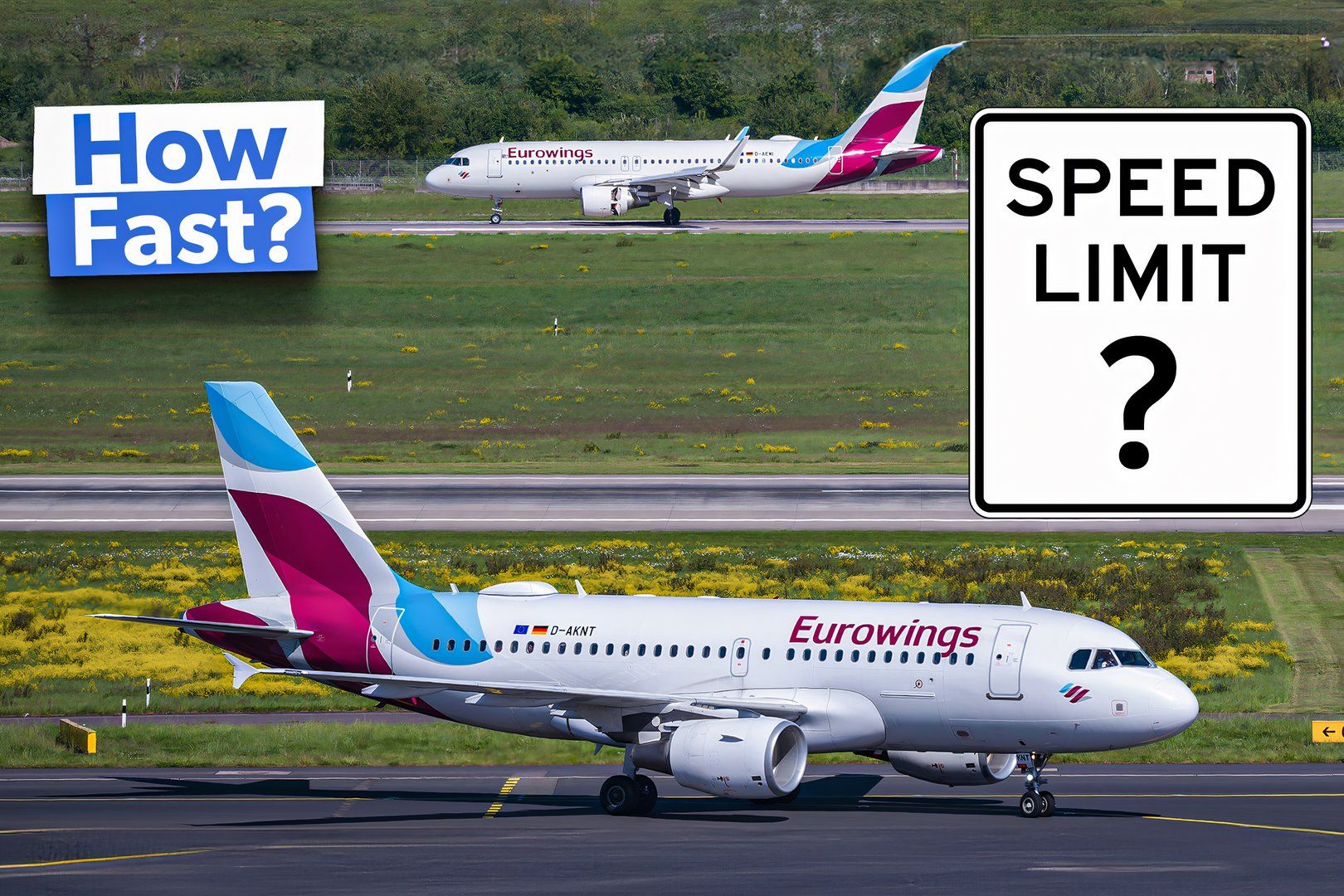Summary Pilots usually keep taxi speed below 30 knots for safety reasons, especially during takeoff and in bad weather conditions. High taxi speeds can increase brake temperatures, potentially causing delays for the next flight in hot weather. Contaminated surfaces or low visibility usually limit taxi speeds to 10 knots or less, with different rules for engine use in icy conditions.
It's hard to tell how fast a plane moves on the ground without access to a window seat. On a smooth taxiway, movement while taxiing might only be perceptible during turns, while slowing down, or accelerating. With this in mind, here's a guide to how fast planes usually taxi.

The speed limit You've probably never seen speed limit signs posted at airports (although speed limit signs on taxiways would be rather humorous). It's up to the pilots to know how fast they can taxi given their company's procedures and the weather conditions. Generally speaking, the fastest that any airline permits its pilots to taxi is 30 knots (35.
5 mph or 55.5 kph). This speed is only allowable on straight-line taxiways that are wide-open and clear of other planes.
Slowing from 30 knots can be done relatively quickly with full brake application, but it's rather jolting. Why airliners record countless data points on every flight. Although taxiing at faster speeds might be allowed, pilots usually keep their ground speed a little below the maximum.
Especially during taxi out for takeoff, flight attendants are moving around the cabin performing safety checks and various activities, so a slower speed is safer for them if sudden braking is needed. In addition, taxi speed is one of the countless parameters monitored by the airline's flight operations quality assurance data programs (FOQA). The safety department will likely be notified if it detects a pilot exceeding the company's limitations for anything longer than a few seconds.
This is another reason pilots might taxi a little slower than their maximum allowed speed. Keep 'em cool Another reason to keep taxi speed under 30 knots is to keep brake temperatures cool. This is especially important after landing in the summer.
The brakes absorb extraordinary kinetic energy during the landing roll-out, which is transferred into heat. Additional brake applications heat the brakes even more, which might delay the next flight's departure if the plane is performing a quick turn and the outside air temperatures are high. This is because the brakes need to be cooled to a minimum acceptable value for takeoff.
Specific Airbus A320 models are fitted with brake cooling fans to assist with this issue. Poor weather Thirty knots is the normal maximum speed on a nice day with good visibility. As you might have guessed, lousy weather reduces the allowable taxi speed for pilots.
A slushy, snowy, icy, or otherwise contaminated taxi surface generally has a speed limit of 10 knots or less. Like any other vehicle with wheels, planes are susceptible to skidding (mainly the nose wheel during sharper turns). For this reason, 10 knots is the fastest pilots can go on contaminated taxiways.
This is also true during low visibility operations when fog is present at the airport. In addition to slower speeds, airlines require that pilots taxi with two engines while wet or icy conditions are present. Having two engines operating enhances the plane's controllability.
For example, with only the left engine turned on, a turn to the left requires a lot more thrust than a turn to the right. This is due to the left engine being inside the radius of the turn. The thrust vector is much less efficient compared to using the engine on the outboard side of the turn's direction.
The consequence is less control and more jet blast, two things you don't want on icy days. While airlines usually want pilots to taxi with a single engine to save fuel, using two engines to taxi is sometimes required. Airport rules Some airports impose speed restrictions on certain taxiways.
This is most often depicted in a Notice to Air Missions (NOTAM) that reads something like "TXWAY Q LIMITED TO AICRAFT TAXI SPEEDS LESS THAN 10KTS." This can be due to uneven pavement, construction work on adjacent taxiways, a tight turn, or another operational consideration. In addition, 10 knots is normally the maximum speed for a turn unless the taxiway is a high-speed capable one.
Why knots? You might be wondering why taxi speed is measured in knots in the first place. In aviation, all speeds on the ground and in the air below about 27,000 feet are measured in knots (Mach is used at higher altitudes). Knots are the standard unit of measurement for the industry and are also used to measure the speed of the wind.
With this in mind, it's important to use knots for unit-to-unit harmony because the wind speed directly influences the plane's airspeed. It thus makes more sense to display knots as the unit of measurement for taxiing since pilots are already accustomed to it while at work. Another note: Taxiing is almost always the captain's responsibility.
Some airlines (but not many) allow first officers to taxi when it is their leg to fly, but this requires that a steering tiller be installed on the right and left sides of the flight deck. Most airlines forgo this option and choose to only allow their captains to taxi. 30 knots straight ahead, 10 in the turn The straightforward answer to the maximum taxi speed is thirty knots, though most pilots keep it under this threshold.
Inclement weather, nighttime, and low visibility conditions reduce the speed to a third of this value. While this is the general modus operandi for taxi speeds, there does seem to be at least one outlier in the US known for its faster taxi speeds. Thirty knots is simply the baseline and is observed by nearly everyone.
We look at the reason behind the aviation industry's preferred unit of speed measurement..



















